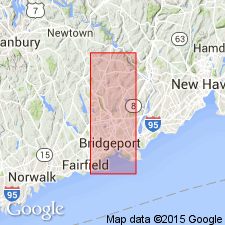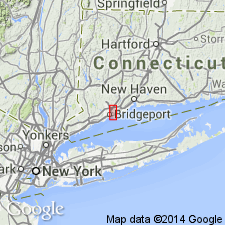
- Usage in publication:
-
- Pumpkin Ground Member
- Modifications:
-
- Named
- Dominant lithology:
-
- Gneiss
- AAPG geologic province:
-
- New England province
Summary:
Pumpkin Ground Member of Prospect Gneiss named in southwestern CT. Unit described as gray, medium-grained, moderately well foliated gneiss. Overlies Southington Mountain Formation and, locally, Trap Falls Formation. Underlies Beardsley Gneiss and Golden Hill Members of Prospect Gneiss. Age is Middle and Upper Ordovician.
Source: GNU records (USGS DDS-6; Reston GNULEX).

- Usage in publication:
-
- Pumpkin Ground orthogneiss
- Modifications:
-
- Redescribed
- Revised
- Age modified
- Geochronologic dating
- AAPG geologic province:
-
- New England province
Summary:
Pumpkin Ground and Beardsley Members of Harrison Gneiss, formerly considered conformable metavolcanic members, are here recognized as juxtaposed metaplutonic units and are renamed the Beardsley and Pumpkin Ground orthogneisses. Isotopic dating yields ages of 428+/-2 Ma (Early Silurian) for the Pumpkin Ground and 446+/-2 Ma (Late Ordovician) for the Beardsley, accepted by authors as crystallization ages. Pumpkin Ground intrudes the Trap Falls Formation. The Harrison Gneiss as described by Rodgers (1985) has no stratigraphic significance and cannot be correlated regionally.
Source: GNU records (USGS DDS-6; Reston GNULEX).
For more information, please contact Nancy Stamm, Geologic Names Committee Secretary.
Asterisk (*) indicates published by U.S. Geological Survey authors.
"No current usage" (†) implies that a name has been abandoned or has fallen into disuse. Former usage and, if known, replacement name given in parentheses ( ).
Slash (/) indicates name conflicts with nomenclatural guidelines (CSN, 1933; ACSN, 1961, 1970; NACSN, 1983, 2005, 2021). May be explained within brackets ([ ]).

